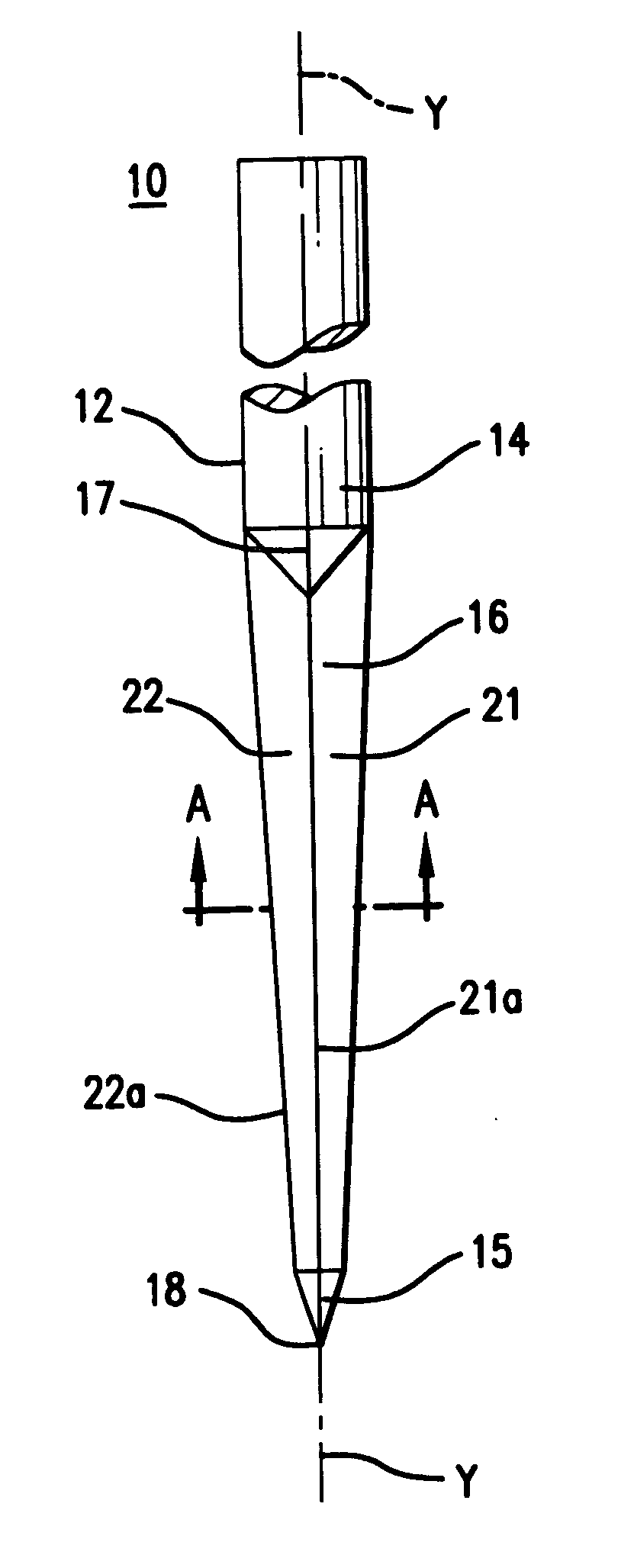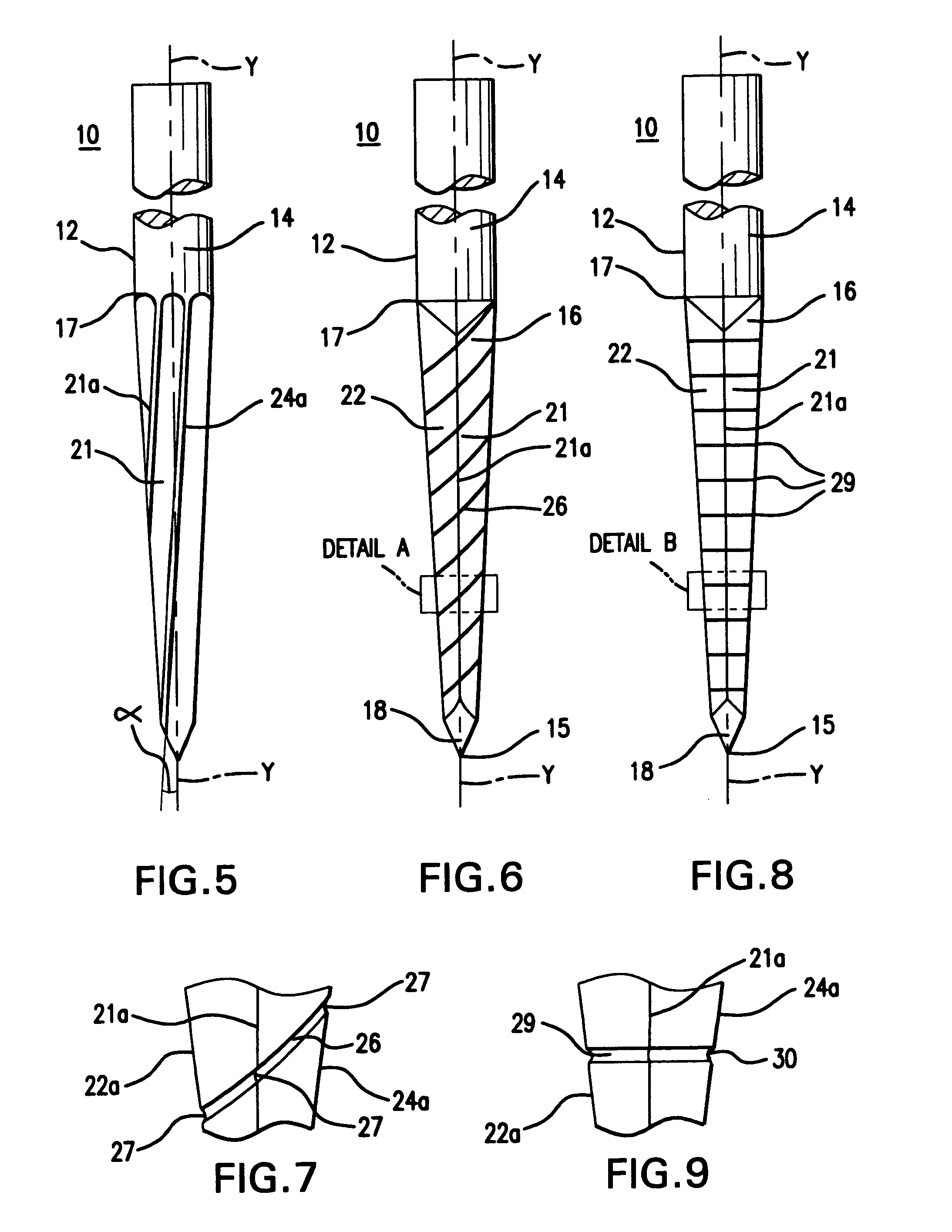Endodontic instruments and method of manufacturing same
a technology of endodontic instruments and endodontic trays, which is applied in the field of endodontic instruments and methods of manufacturing endodontic trays, can solve the problems of instrument failure, instrument self-threading or screwing into the canal, and substantial amount of heat generated, and achieve the effect of facilitating the evacuation of cutting debris
- Summary
- Abstract
- Description
- Claims
- Application Information
AI Technical Summary
Benefits of technology
Problems solved by technology
Method used
Image
Examples
Embodiment Construction
[0036] The present invention relates to an improved endodontic instrument for use in performing root canal therapy on a tooth. In practice, endodontic files and reamers, whether finger manipulated or engine driven, are not normally used in a traditional drill or reamer like fashion. More specifically, endodontic files and reamers are not commonly used in a manner where the instrument is continually rotated in one direction and advanced continuously forward. In reality, finger manipulated files and reamers are quite often used in a watch-winding, quarter-turn-and-pull, or hybrid-balance-force fashion. Engine driven rotary techniques commonly use peck-drill motions, which advance the file or reamer incrementally forward and then retract the instrument. Furthermore, both finger manipulated and engine driven techniques also include repeatedly retracting the file or reamer from the canal to allow irrigation and the introduction of lubricants, which enables debris to be evacuated. Moreove...
PUM
| Property | Measurement | Unit |
|---|---|---|
| size | aaaaa | aaaaa |
| size | aaaaa | aaaaa |
| angle | aaaaa | aaaaa |
Abstract
Description
Claims
Application Information
 Login to View More
Login to View More - R&D
- Intellectual Property
- Life Sciences
- Materials
- Tech Scout
- Unparalleled Data Quality
- Higher Quality Content
- 60% Fewer Hallucinations
Browse by: Latest US Patents, China's latest patents, Technical Efficacy Thesaurus, Application Domain, Technology Topic, Popular Technical Reports.
© 2025 PatSnap. All rights reserved.Legal|Privacy policy|Modern Slavery Act Transparency Statement|Sitemap|About US| Contact US: help@patsnap.com



